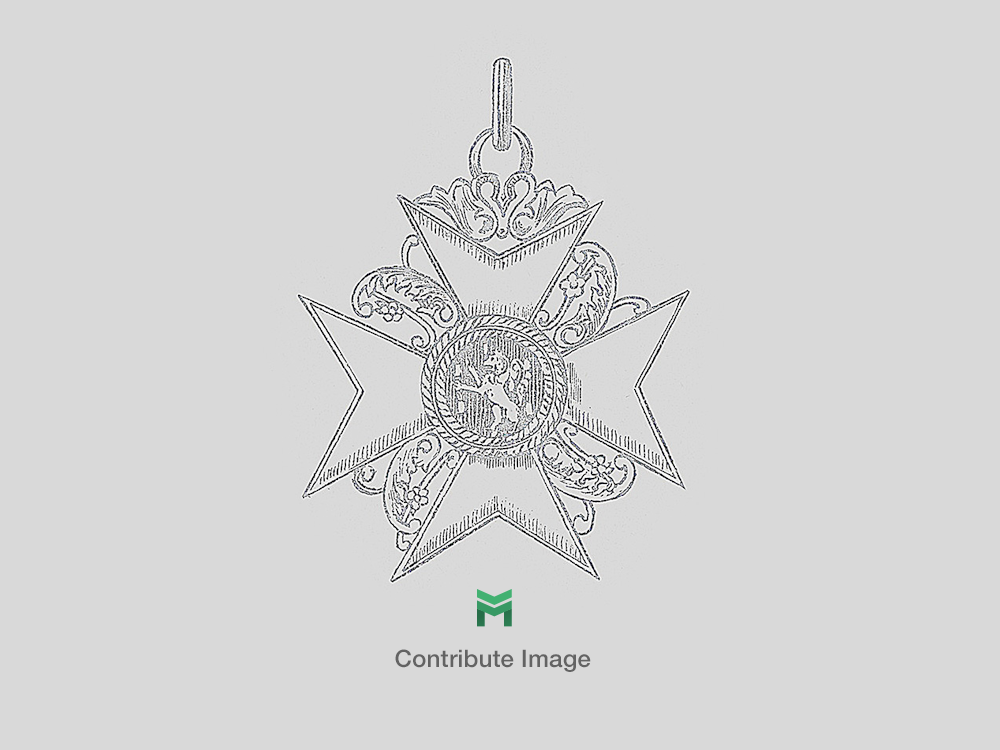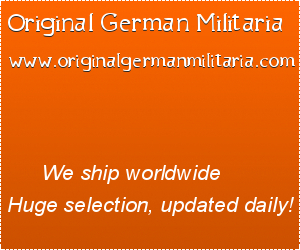Kriegsmarine Coastal Artillery Moleskin Tunic
SKU: 21.GOR.02.01.01.005
Estimated market value:

Estimated market value:
Attributes
History
The headgear, uniforms, and insignia worn by members of the Kriegsmarine were based upon the designs utilized by the Kaiserliche Marine (Imperial Navy) and the Reichsmarine (Navy of the Weimar Republic). The official regulations governing the uniforms of the Reichsmarine were issued on April 5, 1921, and they were embraced, with a few alterations, as the Kriegsmarine uniforms in 1935.
From 1933 to 1945, the uniforms worn by personnel in the German Navy were produced and disseminated by the Navy Clothing Depot and private manufacturers. The cloth was of a high quality prior to the Second World War, but during the war, it became increasingly synthetic and of lower quality. Similarly, the cloth used in the uniforms of Officers and Admirals was of a higher quality than the cloth used in the uniforms of lower ranking personnel, such as Non-Commissioned Officers and Enlisted Men. The cloth utilized in garments of the blue uniform is of an overall better quality than the cloth utilized in the field-grey uniform. For the field-grey uniform specifically, the cloth is more grey-coloured in pre-war uniforms, while the cloth is more green/olive-coloured in wartime uniforms.
The main colour of Kriegsmarine uniform pieces is a dark navy blue. However, during the summer months, and initially also in regions with warmer climate, a white summer uniform was used. Eventually, a brown tropical uniform was introduced for units stationed in tropical and subtropical regions. Land-based Kriegsmarine units, most of which were part of the Coastal Artillery, wore Army-like field-grey uniforms in the style of the Kriegsmarine.
The garments may have proof stamps, serial and unit stamps, and manufacturer marks denoting the legitimacy and origin of the item. They also tend to feature sewn name tabs (Namensläppchen) on all clothing items associated with the blue and field-grey uniforms. The blue uniform garments all have a serial number stamp (Stammrollennummernstempel), while the field-grey uniform garments have a unit stamp.
The proof stamp is present on all garments produced by the Navy Clothing Depot, and it includes the size of the item, if needed, with the year of manufacture above the size, and a surmounting script that reads “B.A.K.” or “B.A.W.”. This stamp information is framed, and written in white ink on blue or black garments and in black ink on all other colour garments.
The serial stamp is composed of letters and numbers, and it is present on blue uniform garments from the Depot. The stamp is either printed in red ink or sewn in red thread. The numbers are preceded by a letter that denotes the area in which the wearer served, with an “N” for Navy Station or an “O” for Navy Station Baltic. The stamp ends in a letter associated with the wearer’s career group, with an “S” for deck personnel and a “T” for technical professionals. Below the serial number is the year in which the wearer entered the navy, surmounted by a horizontal line.
The unit stamp is present on field-grey uniforms. It includes the framed, shortened unit name of the wearer in red ink.
The marks of private manufacturers vary widely, ranging from codes to full names, and even abbreviated letters, as well as the year of manufacture. After 1942, Reich numbers (Reichsbetriebsnummern) were also used as manufacturer marks (RB-).
The buttons worn on Kriegsmarine garments are generally gold-coloured, except for the uniforms of Officials which used silver-coloured buttons. The buttons feature the image of a fouled anchor on the obverse. The buttons are composed of brass, or of light metal. The gold-coloured buttons were gilded, while the silver-coloured buttons were silvered. As well, in the case of special uniform garments the buttons may be composed of plastic.
Two work tunics were used as part of the field-grey uniform: the Drill Tunic and the Moleskin Tunic.
The Drill Tunic was made of two front and two back panels. It has a back slash. It is closed by five buttons in the front. A draw-string inside the waist could be used to adjust the width of the tunic. This garment was rather loose fitting.
The collar is of the “lay-down” style and could be closed by a hook and eye.
The sleeves were cut in two parts.
The tunic has two patch hip pockets without pleats or flaps.
Except with tunics worn by Non-Commissioned Officers, no insignia were worn.
There exists an old style Drill Tunic leftover from the Reichsmarine era. It was sometimes worn by training units until as late as 1936. The differences were a six button front closure and a low “stand-up” collar.
The Moleskin Tunic is named after the fabric it is made of, a form of durable cotton. This tunic was worn exclusively by Non-Commissioned Officers.
The Moleskin Tunic was made of six panels, two front, two lateral, and two back, all connected by seams in the style of the tunic used during the times of the Reichsmarine. In the centre back the tunic has a slash. It has a six button front closure.
The collar has a “stand-up” and a “lay-down” part, the latter made of fabric and a linen filling. It could be closed by a hook and eye.
Early models were made with two-part turned back “French” cuffs, but later models lack cuffs and instead just have a slash, similar to the field blouse.
The tunic has two patch breast pockets with a centre pleat, two slash hip pockets, and two back pockets, one at each side of the back slash, with a vertical opening.
The tunic has several eyelets at the waist line as well as a hooked button in the back to support a belt.
Based on photographic evidence, this tunic was normally worn without the national emblem in the shape of an eagle that was usually found on the right breast.
By 1940, the colour of the work tunics had changed from field-grey to a shade of green that for Army garments was deemed reed-green, however the term field-grey was still used. It was often worn as part of the summer uniform. Around 1941/42, the tunic was replaced by the field-grey Field Blouse.


Comments
Sign in to comment and reply.


Scroll Top